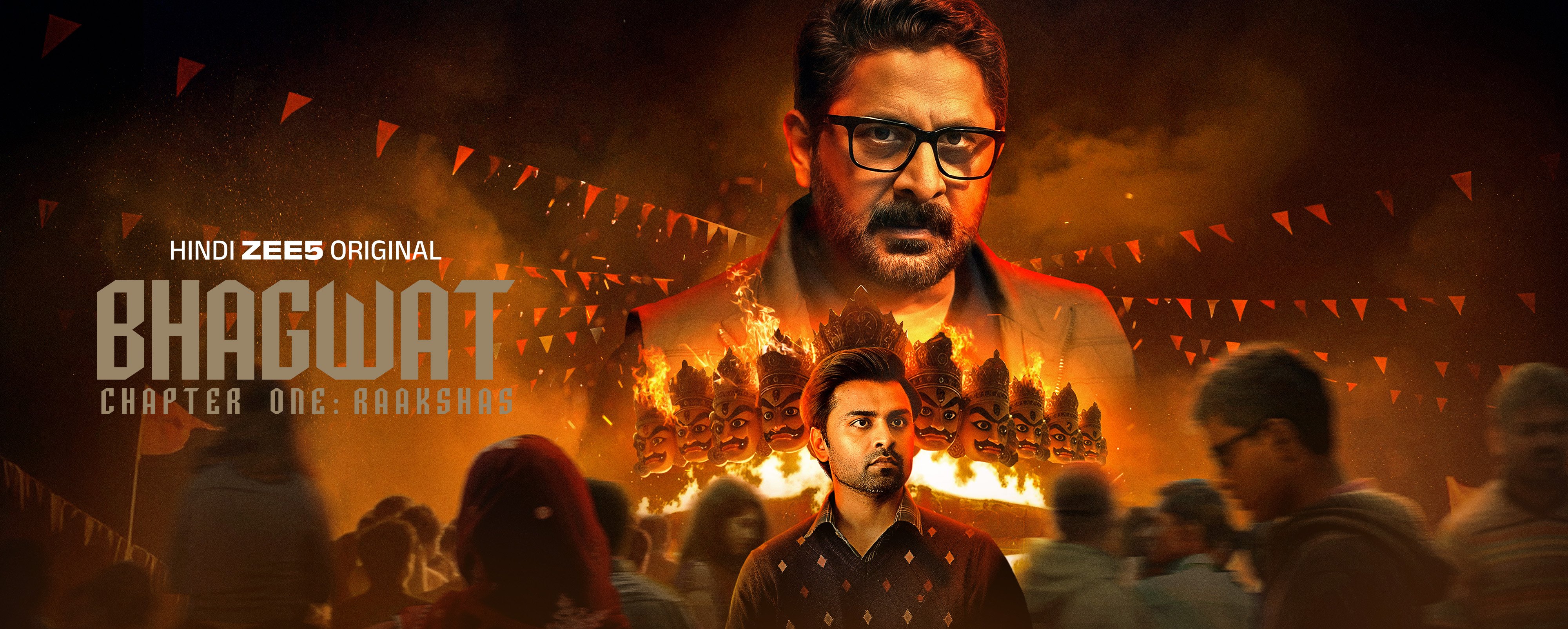Jitendra Kumar walks into Bhagwat: Chapter One: Raakshas with a calm face and loaded silence, and the film uses both like a weapon. Premiering on ZEE5 on 17 October 2025, this Hindi crime-thriller pairs him opposite Arshad Warsi and asks a simple question: when a case about missing young women starts to harden, what does a soft-spoken man with impeccable manners have to hide?
If you’ve only seen Jitendra Kumar in everyday, empathetic roles, this is a deliberate pivot. He plays Sameer (Samir), a man linked to Meera(Ayesha Kaduskar) and her plan to elope—an apparently ordinary romance that keeps crossing paths with Inspector Bhagwat’s investigation. As the inquiry widens, Sameer stops looking incidental and starts looking central.
The Role at a Glance: Sameer, the quiet variable
The official synopsis frames the case cleanly: Inspector Bhagwat is transferred to a small UP town to find a missing girl; meanwhile, Sameer is in love with Meera and plans to run away with her. The question the film asks is not “Are they in love?” but “Why does their track keep intersecting with a growing list of vanished girls?” That intersection—mundane love meeting methodical horror—is where Jitendra’s performance sits.
What the trailer lets you see (and what it holds back)
The cut gives you three reliable tells. First, the pattern—the search for one girl opens to a trail of many. Second, the temperature—Bhagwat is hot-headed; Sameer is ice-cool. Third, the pivot—once a suspect is in play, motive turns “wicked,” and the story asks you to re-read earlier scenes. These are not jump scares; they are realignments. Jitendra’s close-ups are built for that—micro expressions, near-stillness, and eye-lines that hold a frame.
Character function: how Sameer moves the plot
The Bhagwat Chapter One: Raakshas’s structure is classic procedure—problem → pursuit → consequence—but Sameer bends that line. Early, he anchors the Meera thread; later, he becomes a test of Bhagwat’s judgment, forcing the cop to choose between heat and proof. Bhagwat movie pegs Sameer as a professor, which tracks with how he holds conversations: measured, careful with words, and hard to corner. None of that proves innocence. It only proves control.
Performance Notes: Why Jitendra Kumar’s Role is Different
Jitendra plays absence as actively as presence. He under-answers questions, lets silences sit half a second longer than polite, and rarely blinks in a face-off. When the script wants a jolt, he doesn’t go loud; he goes still. That stillness is what tightens scenes around him—and what lets Arshad Warsi play heat without tipping into noise. Even trade, clean balance. (In press, Jitendra has acknowledged this is a darker, riskier lane for him, and you can feel that choice in how little comfort the performance offers.)
The Warsi–Kumar Dynamic: friction that earns the action
Set pieces in Bhagwat are built from decisions, not spectacle. The best of them land because the Warsi–Kumar pairing earns the escalation: a look withheld, a fact withheld, a chase taken a beat too late. The trailer and title both hint at Bhagwat’s temperament and the scale of the case; Jitendra’s restraint gives those beats consequence. You care who moves and why, so when the film accelerates, it isn’t noise—it’s math paying off.
Sameer in the larger design of “Chapter One”
The “Chapter One” tag promises a wider canvas, but this action film is self-contained. Sameer’s arc does two things at once: it closes this case cleanly and opens a set of rules for the world the franchise wants to build—how suspects speak, how truth is tested, how the city itself participates. A professor in love becomes a lens on power, control, and the ease with which a neat story can hide a brutal pattern.
Why the part suit Jitendra Kumar?
Look closely at how scenes are staged: ordinary rooms, natural light, sound that sits inside the world (doors, radios, distant traffic). In that register, an unhurried actor has reached. Jitendra’s toolkit—precision, economy, irony held just behind the eyes—fits this thriller film’s ethic: outcome over optics. The character is written to be readable only if you watch, not skim, and the performance respects that pact.
How does this fit Jitendra’s career arc?
Across the last few years, Jitendra Kumar has become shorthand for authenticity. Bhagwat flips that comfort. In interviews around the film’s launch window, he talked about stepping away from the “relatable” tag to try a morally ambiguous space opposite a senior co-star he admires. The shift isn’t cosmetic; it’s structural—fewer quips, more silence; fewer explanations, more implication. If you’ve wanted to see him play on the other side of the line, this crime movie is the try.
What to watch for on first play
-
The first conversation between Sameer and Bhagwat. Who asks the real question? Who answers it?
-
The moment Meera’s track forces you to reassess your read on Sameer.
-
A scene with papers on a desk—what is offered, what is avoided, and what the eyes do while the mouth is still.
-
In the final stretch, where timing is the only currency left, note how a soft voice can move the room.
Release, runtime, and where to start
Bhagwat Chapter One: Raakshas streams on ZEE5 from 17 October 2025 (U/A 13+, 2h 07m, Hindi with English subtitles). Start at the official title page; it holds the synopsis, cast, trailer, and player in one place. Then give the film one uninterrupted sitting—the story builds pressure, and breaks bleed it away.
Bio of Author: Gayatri Tiwari is an experienced digital strategist and entertainment writer, bringing 20+ years of content expertise to one of India’s largest OTT platforms. She blends industry insight with a passion for cinema to deliver engaging, trustworthy perspectives on movies, TV shows and web series.




